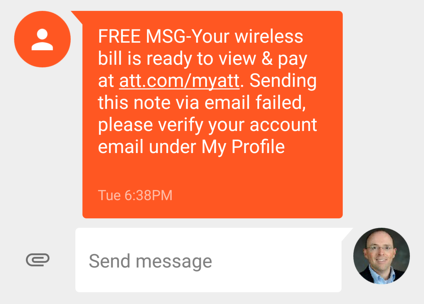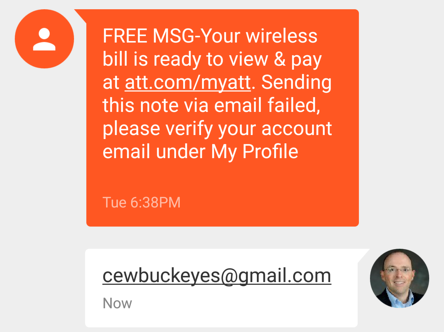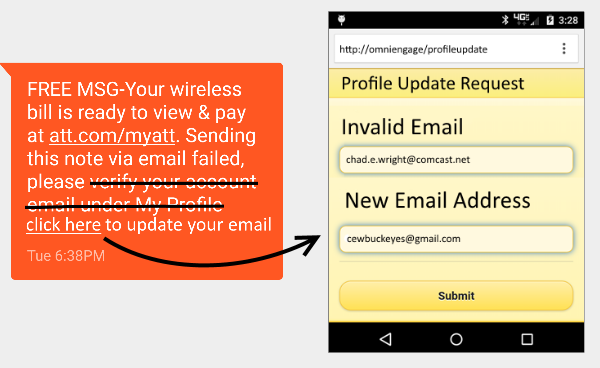Mar 08 2017 Here’s How You Screw Up Proactive Customer Engagement

I wish I could buy a cup of coffee in the morning, a drink at happy hour or lunch at Panera Bread with every customer service leader on the front lines to talk about customer engagement. Could that be you? If so, I’d like to think that by the end of that meeting you would feel compelled to buy my coffee (or glass of wine) based on the value of learning how not to engage your customers.
Sadly the constraints of reality preclude me from embarking on such an endeavor. So instead, if you’re a leader in customer service, I invite you to pull up a chair and pour yourself a coffee, sip on a cocktail or eat a sandwich, whichever is most appropriate, so we can have this conversation virtually.
“We surveyed 100 people and the top 5 answers are on the board!”
I often use the quote from Mark Twain to both my clients and my team to emphasize the point of stopping and thinking before we plan the use of technology to engage customers:
“Figures often beguile me, particularly when I have the arranging of them myself; in which case the remark attributed to Disraeli would often apply with justice and force: ‘There are three kinds of lies: lies, damned lies and statistics.'”
In a Family Feud game format, I could list what the researchers are telling you to do to magically fix all your customer service problems overnight. High on that list for the past half-decade, if not No. 1 each year, is “proactive engagement.”
Or, in plain English, sending emails, phone calls, tweets and texts to your customers before they contact you.
We may or may not see humor in the infamous Steve Harvey video in which the Family Feud host messed up the Miss Universe winner. But it’s still easy to “pull a Steve Harvey” and have your customer notifications have a similar impact on your company, which likely tosses your notifications into the infamous bucket of “lies, damned lies and statistics”, when you measure the impact to your business or lack of ROI.
How Notifications Drive Customer Loyalty
That said, my purpose here isn’t to sully the good name of “proactive engagement,” because it can be very powerful when leveraged and executed correctly. But first, I will use a SMS text that I received from my cell phone carrier as a great example on how not to notify your customers.
Here is the actual text that I received:

While it is true that all the research points to engaging your customers, you need to engage them effectively.
What I mean by that is your solution needs to be designed to make the experience of a customer resolving their issue effortless. In my case, the email address on file is not valid anymore, and AT&T has asked that I update it.
Before you read on, please stop reading this blog post and think about what is good and what is bad about the text message.
How to Maximize the Effectiveness of Notifications
The key to loyal customers (or hitting your SLAs and target budget, for that matter) is to make problems go away as quickly as possible. Again, using the example above, I am going to list the steps I had to take to “fix” my email account on file with AT&T:
- Googled AT&T.
- Selected the customer login link from the search result.
- I entered my mobile number as the user name and “guessed” the password.
- The password was wrong, but my second attempt was accurate.
- I was challenged with a “PIN” number.
- I called my wife Amy, who did not know the PIN number.
- I texted my daughter Morgan, who sent the PIN number.
- I then had to click on 4 links to find the page that had my email address.
- I updated the email address.
- I saved the Wright family profile.
I had to “invest” 10 minutes and go through at least 10 steps to change an email address, because AT&T “proactively engaged me” with a homework assignment that was incredibly frustrating.
As I’ve said before, do not make it your customer’s problem to fix something. Guide them to the most effective way to make the problem go away, or simply take out a piece of paper and start writing down steps and create the before and after number of actions needed by your customer to complete a transaction.
The goal is simple, get the number of steps close to one and no more than three.
I tried to get hold of the “powers that be” at AT&T, but found no success after several attempts. I would offer two solutions to make it effortless to update a profile: Interactive Text Response or a mobile app.
Interactive Text Response
Instead of the 10 steps listed above, it would be great if AT&T empowered their customers to be able to simply respond directly to the text? It would take two steps for me to type in my email address and hit the send button.
For the record, I tried this and failed:

When you open up your text notifications and make them interactive, your customers will love you for it!
Mixing a Mobile Application with Your Text Message
If you’re not quite ready for this, a second way to create an effortless experience is by using a “disposable“mobile web application. (I recommend using HTML5 to support all phone types.) I could have clicked on the link, typed in my email address and saved my profile – with no need to mess around with the entire web portal.
I mocked up the solution below to give you the visual:

Final Thought
Again, I’m not saying the researchers are wrong; they’re right when they say customers want you to engage them. But first you need to allow them to interact with the notification. But unless your goal is to erode customer loyalty rather than nurture it, do not force them to call you back, log on to a web site or go through 10 steps to fix a problem.
I’m looking at you, AT&T.
